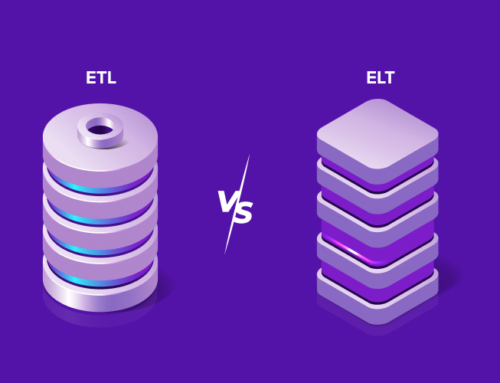6 Data Pipeline Best Practices for Maintaining High-Performance
Vikram Verma
Oct 14, 2025
When data pipelines fail, the impact is immediate and costly. On average, poor data quality drains nearly $12.9 million annually from organizations, while system downtime can cost hundreds of thousands of dollars per hour.
For some enterprises, every hour of disruption translates to millions in lost revenue. So we won’t call them “just technical glitches”; they’re definitely business-critical failures.
As data volumes continue to grow exponentially, businesses can’t afford to wait for pipeline failures to surface. Competitive organizations ensure their pipelines deliver accurate, reliable data around the clock. The difference between teams that struggle and those that thrive often comes down to proactive maintenance.
In this blog, we'll explore 6 best practices that help transform fragile pipelines into resilient, high-performance systems. You’ll learn how to detect risks early, design for scale, eliminate bottlenecks, and build the institutional knowledge that keeps data flowing smoothly—even as your technology and teams evolve.
What You Need to Know First
Before jumping into specific maintenance practices, you need to first assess the current state of your pipelines. Most organizations face three persistent challenges that can make or break their data operations:

- Detection lag (how quickly you spot problems when they occur),
- Resolution complexity (how difficult and time-consuming it is to diagnose and fix pipeline issues), and
- Quality control (maintaining data accuracy and completeness throughout every step of the process).
Here's the reality: high-performance data pipelines demand far more than simply connecting systems together. They require strategic architecture that anticipates failures before they occur, scales smoothly as your data grows, and protects data integrity at every stage.
Fortunately, these challenges aren’t insurmountable. With the right monitoring, validation, and workflow strategies, you can keep your data pipelines running smoothly and reliably.
6 Best Practices For Data Pipelines
These six practices represent the core disciplines that separate resilient, high-performance pipelines from those that constantly break under pressure.

Build Early Warning Systems
Most organizations discover pipeline problems when it's too late. When data is corrupted, reports fail, and business decisions are made with outdated information. The best data teams flip this script by building monitoring systems that catch problems before they become disasters.
Modern pipeline monitoring goes far beyond checking if jobs complete successfully. Here’s how top teams stay ahead:
- Data Quality Monitoring: Track data arrival times, record counts, unexpected format changes, and unusual patterns that signal issues.
- Multi-layered Observability: Monitor data from ingestion to transformation to final destinations, ensuring everything looks right at every stage.
- Intelligent Alerting: Trigger instant notifications for serious issues like missing data, slow processing, or broken structures that could impact operations.
- Escalation Protocols: Differentiate response levels — minor delays can wait until morning, but critical systems like fraud detection need immediate action.
The key is catching problems when your customer data suddenly drops by 30% at 2 AM. And, you want to know immediately, not when your marketing team discovers empty reports in the morning. The organizations that master early warning systems often prevent problems entirely by spotting trends and patterns before they manifest as actual failures.
Future-Proof Your Architecture Now
Here's a hard truth: The data pipeline you build today will face completely different demands in 18 months. Your data volumes will explode, new systems will need integration, and business requirements will shift in ways you can't predict.
That’s why it’s important to think modular, not monolithic. The strongest pipeline architectures break complex processes into smaller, independent components that can be updated, replaced, or scaled individually.
Modular pipelines make it possible for your data infrastructure to evolve alongside the business, supporting growth and changing requirements without disruption.
Here's what future-proof architecture looks like in practice:
- Schema Evolution Support: Build systems that handle data structure changes without breaking downstream processes. When source systems add new fields or change data types, your pipeline adapts automatically.
- Cloud-Native Design: Use containerization and orchestration tools that scale resources up or down based on demand, ensuring performance stays consistent as data volumes grow.
- API-First Integration: Design components with well-defined interfaces that make it easy to connect new data sources or swap out processing engines as requirements evolve.
- Flexible Storage Patterns: Implement storage solutions that support both current analytics needs and future use cases, from real-time dashboards to machine learning model training.
The payoff is substantial. Future-proof architectures don't just prevent costly rebuilds—they enable rapid response to new opportunities.
Eliminate Performance Bottlenecks Systematically
Performance problems rarely announce themselves with clear warning signs. Instead, they compound gradually. Reports take a few extra minutes, dashboards lag slightly more each week, and costs continue to creep upward while throughput remains flat. By the time teams notice the impact, a minor inefficiency becomes a major operational constraint.
The secret isn't throwing more hardware at the problem. Adding compute power to poorly optimized pipelines is like hiring more employees without improving the workflow—you have more hands, but the process is still stuck at the slowest step.
The real solution is smart optimization. It starts with identifying where your pipeline actually slows down, not where you think it should.
Here's how high-performing teams tackle optimization systematically:
- Profile Before You Optimize: Monitor resource utilization, query execution times, and data processing speeds across every pipeline stage to identify actual constraint points, not assumed ones.
- Optimize Data Movement: Reduce unnecessary shuffling between systems using smart partitioning strategies, compression techniques, and efficient serialization formats that minimize network overhead.
- Implement Parallel Processing: Break large processing tasks into smaller, independent chunks that run simultaneously, dramatically reducing overall processing time while maximizing resource utilization.
- Right-Size Processing Resources: Match compute resources to workload demands using auto-scaling configurations that expand during peak times and contract during quiet periods.
The compounding benefits extend beyond speed improvements. Optimized pipelines handle larger data volumes, support more concurrent users, and enable real-time analytics that wouldn't be possible with poorly performing infrastructure.
Set Up Data Quality Gates for Rapid Issue Detection
Data quality issues are like cracks in a foundation. Small problems today become structural disasters tomorrow. A single corrupted customer record might seem harmless until it triggers thousands of incorrect marketing campaigns.
Previously, organizations often detected data quality issues only after they appeared in reports or dashboards, by which time errors had spread and eroded trust in insights.
Smart data teams now use quality gates—automated checkpoints that validate accuracy, completeness, and consistency at key pipeline stages. These gates act like security checkpoints: when a check fails, alerts fire, and issues are fixed before they propagate.
Effective quality gates operate at multiple levels:
- Schema Validation: Verify incoming data matches expected structures, types, and field requirements.
- Business Rule Enforcement: Ensure data values, relationships, and critical fields meet defined rules.
- Completeness Monitoring: Confirm all expected records arrive on schedule.
- Consistency Checks: Validate that transformations preserve logical relationships across systems.
- Anomaly Detection: Flag unusual patterns indicating upstream issues or potential corruption.
With robust quality gates, teams spend less time fixing issues, deliver reliable analytics, and focus on generating business value from clean, validated data.
Optimize Your Infrastructure Spend
According to Fivetran research, 67% of large enterprises dedicate over 80% of their data engineering resources to maintaining existing pipelines, leaving little room for innovation or optimization. This maintenance burden compounds heavily when infrastructure is improperly sized. Teams spend more time managing overprovisioned systems than building value-generating capabilities.
The solution is to optimize infrastructure so it aligns with actual workload demands and drives operational efficiency. High-performing teams adopt dynamic resource management, adjusting capacity in real time to meet workload requirements efficiently while avoiding unnecessary costs.
Here's how to optimize infrastructure investment:
- Auto-Scaling Configuration: Use managed services that adjust computing power automatically to match demand, scaling up during peaks and reducing usage during low periods.
- Spot Instance Strategy: Leverage lower-cost spot instances for non-critical workloads while reserving reliable resources for mission-critical operations, cutting processing costs by up to 90% for suitable tasks.
- Storage Tiering: Move frequently accessed data to high-performance storage and archive older data to cheaper, slower tiers.
- Workload-Specific Instances: Align compute resources with task requirements—memory-optimized for large dataset transformations, CPU-optimized for intensive calculations.
- Data Deduplication: Regularly detect and remove redundant data to reduce processing load and storage costs.
Optimized infrastructure scales predictably, responds faster to changing workloads, and frees budget to invest in new capabilities instead of maintaining oversized, underutilized systems.
Create Knowledge That Survives Team Changes
Picture this: Your senior data engineer who built the customer analytics pipeline just gave two weeks' notice. The marketing team's critical reports start failing the day after she leaves, and nobody understands how the complex transformation logic works. The documentation exists somewhere, maybe in a shared folder, possibly in someone's personal notes, definitely scattered across multiple systems and formats.
This scenario repeats itself in data teams everywhere. Critical pipeline knowledge sits in people's heads instead of proper documentation. When someone leaves, that knowledge disappears with them. Data pipelines aren't self-explanatory—they're full of business rules and complex logic that only make sense if someone explains the reasoning behind them.
To resolve this, build knowledge systems that capture not just what your pipelines do, but why they do it, how they connect to business requirements, and what happens when things go wrong.
Here's how to create knowledge systems that actually work:
- Living Architecture Documentation: Maintain up-to-date diagrams that show data flow, system dependencies, and transformation logic, which automatically update when pipeline configurations change.
- Decision Context Recording: Document not just implementation details, but the business reasoning behind design choices, trade-offs considered, and why specific approaches were selected over alternatives.
- Operational Runbooks: Create step-by-step guides for everyday maintenance tasks, troubleshooting procedures, and emergency response protocols that non-experts can follow efficiently.
- Business Logic Mapping: Clearly document how data transformations relate to business rules, compliance requirements, and reporting needs so changes can be made confidently.
- Dependency Tracking: Maintain comprehensive records of upstream and downstream dependencies, including which teams or processes rely on specific data outputs.
- Version-Controlled Documentation: Store documentation alongside code using version control systems, ensuring documentation stays synchronized with pipeline changes and evolution.
Teams with strong knowledge systems onboard new members faster, make changes with greater confidence, and avoid the costly delays that occur when critical systems become black boxes that nobody dares to modify.
Stop worrying about pipeline failures and data quality issues. BuzzClan integrates early warning systems, automated monitoring, and 24/7 pipeline maintenance into a complete service package that keeps your data flowing reliably.
Conclusion
Building resilient data pipelines comes down to one simple truth: prevention beats reaction every time. These six practices transform your data infrastructure from a constant source of stress into a competitive advantage that actually works for your business.
Resilient pipelines let your business scale smoothly and adapt to changing demands. They turn data into reliable insights and reduce the risk of operational bottlenecks. Organizations that optimize their pipelines can focus on growth instead of constantly troubleshooting issues.
The time for deliberation has passed—it's time to build the data infrastructure that gives your business the competitive edge. Don't let another quarter go by.
Schedule a consultation with our data engineers to start building the pipeline infrastructure that turns your data operations from a bottleneck into a business accelerator.
FAQs

Get In Touch







